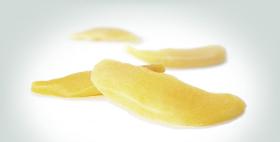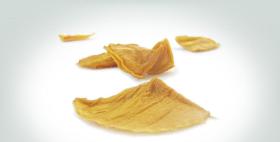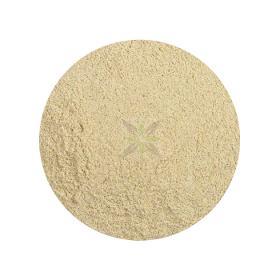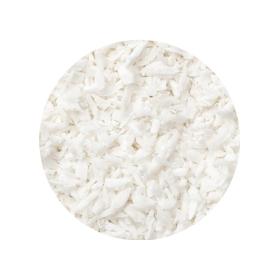- europages
- >
- COMPANIES - SUPPLIERS - SERVICE PROVIDERS
- >
- tropical fruits
Results for
Tropical fruits - Import export

HORST WALBERG TROCKENFRUCHT IMPORT GMBH
Germany
Productinformation Mangos may vary very much in shape, color and size – that is due to the fact that there are many different types of these tropical fruits. Their coloring ranges from green, yellow and even red. Under their thin, uneatable pericarp lies the succulent flesh, which constitutes nearly seventy percent of the whole fruit. Origin The mango got cultivated in India 4000 years ago – and is today, besides pineapples – one of the most popular tropic fruits. Countries of origin comprise many tropical and subtropical regions: Thailand, Hawaii, India, Burkina Faso, Colombia or Brazil. But nowadays the mango gets cultivated in Southern Europe as well.
Request for a quote
HORST WALBERG TROCKENFRUCHT IMPORT GMBH
Germany
Productinformation Mangos may vary very much in shape, color and size – that is due to the fact, that there are many different types of these tropical fruits. Their coloring ranges from green, yellow and even red. Under their thin, uneatable pericarp lies the succulent flesh, which constitutes nearly seventy percent of the whole fruit. And even in their “dryfruit-state” they remain a healthy and juicy tasting fruit snack – fruity-sour and aromaticly sweet. Origin The mango got cultivated in India 4000 years ago – and is today, besides pineapples – one of the most popular tropic fruits. Countries of origin comprise many tropical and subtropical regions: hailand, Hawaii, India, Burkina Faso, Colombia or Brazil. But nowadays the mango gets cultivated in Southern Europe as well.
Request for a quote
VEHGRO B.V
Germany
"Origin The Acerola (Malpighia emarginata) is native to the Caribbean and northern South America, growing at altitudes of 1500 m. Acerola is a tropical fruit. It is also called the Barbados cherry or West Indian cherry. Although the acerola is native to the Caribbean, it is also found in the northern part of South America. In addition, acerola is cultivated in Hawaii, Southeast Asia, the U.S. state of Florida and other parts of South America. Acerola belongs to the Malpighiaceae family and occurs as a widely branched shrub or tree and has slightly hairy branches. The ripe fruit has an orange to dark red skin and measures about 2 by 2.5 centimetres. Inside, the fruit is yellow to orange and has a distinctive sweet-sour taste. The Acerola cherry is dried and then ground into a fine powder. Healthy Benefits of Acerola: Contains acerola Organic vitamin C? The fruit is very high in vitamin C and contains many antioxidants. It also contains vitamin…"
Request for a quote
VEHGRO B.V
Germany
"Origin of the Coconut The coconut (Cocos nucifera) comes from the coconut palm. Coconut palms grow mainly in tropical countries. The fruit of the coconut is found in a green husk. After the removal of the green part, what remains is the hairy, brown and wooden nut. The brown ball has a diameter of 10 to 15 centimetres and contains the white flesh. Coconuts were first cultivated in Southeast Asia and today most coconuts come from Indonesia, Filepines and India. For more information about this product, please visit the following page: Article Coconut Oil Production process Coconut Oil odourless The flesh of the coconut has a sweet, nutty taste. After harvesting the coconut, it is processed into an oil. The coconut oil is pressed from the dried flesh of the coconut and originally refined, bleached and deodorized. Use of Coconut Oil Coconut oil has a high saturat…"
Request for a quote
VEHGRO B.V
Germany
"Origin of the Coconut The coconut (Cocos nucifera) comes from the coconut palm. Coconut palms grow mainly in tropical countries. The fruit of the coconut is found in a green husk. After the removal of the green part, what remains is the hairy, brown and wooden nut. The brown ball has a diameter of 10 to 15 centimetres and contains the white flesh. Coconuts were first cultivated in Southeast Asia and today most coconuts come from Indonesia, Filepines and India. Processing into Coconut Flakes After harvesting, the green outer shell of the coconut is removed. Then the white pulp is cleaned and removed from the brown shell. The pulp is then sterilized and cut into pieces, after which it can go into the oven to dry. After this process, the pulp is processed into coconut flakes. Use of Coconut Flakes The coconut flakes have a typical milky and sweet taste. They are crunchy and sweet and pleasant aroma. The coconut flakes are very suitable as a garnis…"
Request for a quoteDo you sell or make similar products?
Sign up to europages and have your products listed

CHEM2MARKET GMBH
Germany
Quality: for food Processed plant part: fruit Extraction agent: ethanol & water Carrier: maltodextrin Scientific name: Psidium guajava Linn The guava is a tropical fruit with juicy, slightly sweet and sour flesh and an intense aroma. It is rich in vitamin C and fiber. Our products are sold in bulk. There is a minimum order quantity of 25kg for most of our products. Samples can be provided. Plants2Market is also BIO, HACCP and DIN EN ISO 9001 certified. We also offer the following products: Acerola Field bean Field horsetail African black bean Elecampane Alpha lipoic acid Amla Artichoke Ashwagandha Astaxanthin Valerian Bamboo Beta Glucan ORGANIC Birch leaf ORGANIC Brazilian almond ORGANIC Nettle ORGANIC Broccoli ORGANIC Chaga ORGANIC Chlorella ORGANIC Cranberry ORGANIC Barley grass ORGANIC Ginseng ORGANIC Grapefruit ORGANIC Kale ORGANIC Rosehip ORGANIC Blueberry ORGANIC Hedgehog spikenard
Request for a quoteResults for
Tropical fruits - Import exportNumber of results
7 ProductsCountries
Company type